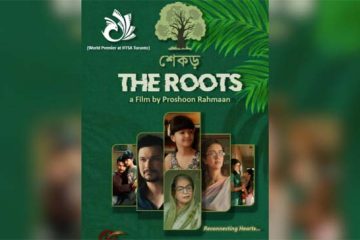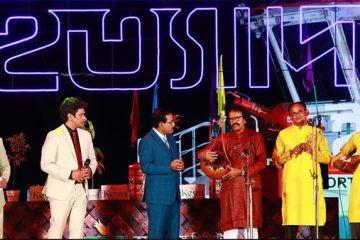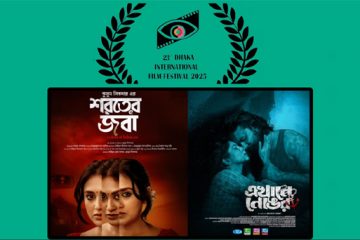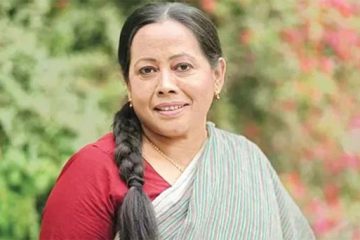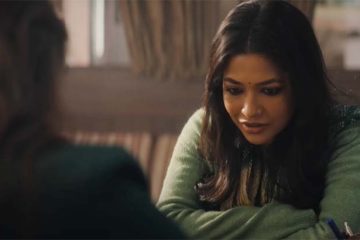Local channels’ approach over-commercialised: experts
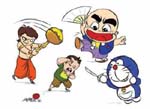 Lack of entertainment programmes on the local TV channels is forcing millions of children to watch animated series aired by foreign TV channels portraying violence and ‘unethical’ activities.
Lack of entertainment programmes on the local TV channels is forcing millions of children to watch animated series aired by foreign TV channels portraying violence and ‘unethical’ activities.
These series, mostly dubbed in Hindi, are not only influencing the local children to speak Hindi, but also imparting ‘unethical teachings’ to the innocent minds, observe psychiatrists and media experts.
Media experts say the indifference towards child entertainment of the local channels is a result of their highly commercialised approach.
Japanese animation character Doraemon, a next century robot, has already become an icon for the urban children. School bags and toys containing portraits of the iconic character cost more than the other brands.
‘Doraemon is the only source of entertainment for my child. Her days start with watching the cartoon series in the morning. She goes to school with “Doraemon bag” and “Doraemon pencils”. Just because of her addiction to the cartoon, we miss so many TV pgorammes,’ Nusrat Jahan told New Age.
‘Initially, I offered her to watch cartoons to keep her busy so that I can finish household chores. But, now she is so much addicted to the cartoons that when I omit the cartoon channel from TV list, she bursts out in anger saying “Tomko sabak sikhaonga” [I’ll teach you a lesson], a frequently uttered dialogue of the animated series, dubbed in Hindi,’ she added.
Not only Doraemon, other cartoon and animated series such as Hagemaru, Chhota Bheem and Mighty Raju, aired on satellite channels appear as the ‘electronic babysitter’ for the tens and thousands of urban children in Bangladesh.
Top favourite Doraemon series features the stories of the next century robot character’s aid providing ‘next century gadgets’ to save the deceitful character Nobita from the troubles he creates.
The titular character of another Hindi-dubbed Japanese animated series Hagemaru is nothing but a cheat, who always tries to mislead his teacher and friends through treacherous activities.
The titular character of another popular Hindi animated cartoon series Chhota Bheem, however, is not a cheat, rather an action hero living in an imaginary village in India, who is always found fighting with evils. Sometimes, legend Krishna of Hindu mythology helps Bheem.
‘My little kid frequently punches others as his favourite hero Bheem does,’ an annoying mother Hosne Ara said.
Similarly, local children are entertained by the action scenes of the animated mythological characters such as Hanuman and animated sci-fi characters like Mighty Raju.
Age old Tom and Jerry and Mickey Mouse series are still very popular entertainers.
That does not mean that there is no touch of love in these animated series offered for children. In the fairy tales of the Barbie series aired on such cartoon channels, hugging and kissing scenes are very common.
‘Children’s affection for such animated series featuring actions and unethical activities have long term impact on them. What will they do ten years after if they learn to tell “Sabak sikhaunga” at a tender age? We should address the issue very seriously,’ Professor Shamim Ferdaus Karim, a teacher of educational and counselling psychology department of Dhaka University, told New Age.
‘Several researches reveal that parents should not allow their children to watch TV more than an hour. They should strictly control their children from watching actions and unethical activities. And the local channels should offer entertaining programmes relevant to our culture and tradition. And the tendency of talking in Hindi in children is definitely a matter of concern for the nation,’ Professor Karim added.
In response to New Age’s questionnaire sent to the existing private and state-run channels, only six channels replied that they air programmes for child entertainment on which the only state-run Bangladesh Television has daily programmes.
Private channels like Desh TV, Boishakhi TV, ETV, Gazi TV and Diganta TV have weekly and fortnightly programmes for children.
These programmes, however, are failing to attract children. ‘Not only the programmes for children, we know, BTV’s programmes are not attracting any audience. And we are planning to face the challenge,’ director general of BTV M Hamid told New Age.
‘I don’t agree that we cannot make quality programmes targeting the children. Huge popularity of Meena and Sisimpur amongst children proves that we can also make quality programmes. But we have failed to continue making such programmes due to over-commercialised approach of the TV channels,’ Mostafa Monwar, who was the key person behind Meena and Sisimpur, said.
‘India also initiated programmes when we started the Unesco-funded Meena project. But, they have developed a lot and now their entertaining programmes are dominating local audience. If the local channels cannot produce programmes, they can at least air Bangla-dubbed foreign programmes. It will save children from the language aggression,’ added Monwar, who led Bangladeshi, Indian and Sri Lankan experts in the Meena project.
Experts have also demanded that the government should take steps in this regard. ‘Independent regulatory bodies ensure broadcast of children programmes in case of general TV channels in other countries of the world. There is no such regulatory body in Bangladesh to monitor. Here the TV channels even are not required to mention criteria of programmes they will air while obtaining license,’ SM Shamim Reza, a teacher of mass communication and journalism department at Dhaka University, said.
‘But, as a signatory to the UN Convention of the Rights of the Child, the government should ensure programmes for children in the broadcast media forming a regulatory body,’ added Reza, who also did research works on the issue.
Information secretary Hedayetullah Al Mamun told New Age, ‘Our media enjoys highest freedom in the world. We don’t want to intervene in their activities through regulatory body. But, we are thinking to encourage them to address such issue considering the future of the country.’
-With New Age input


